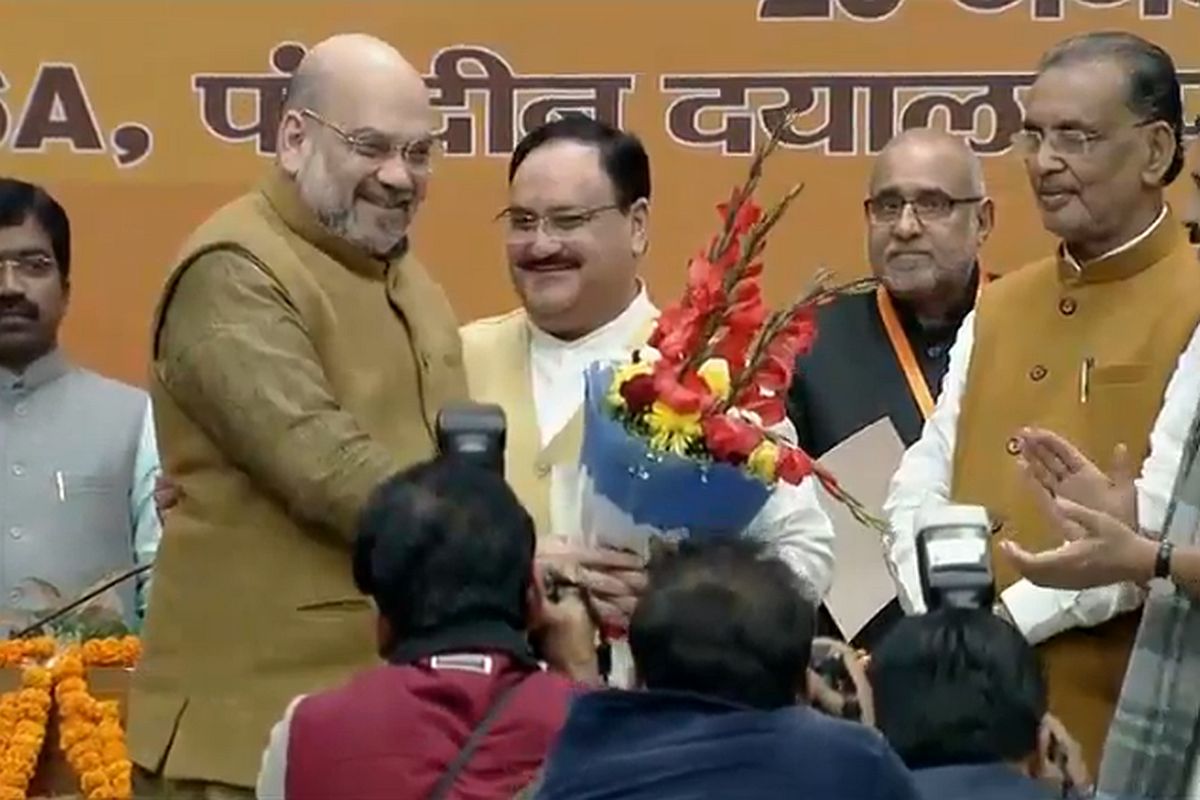Centre approves disaster mitigation and capacity building projects for States
A meeting of the committee which included the Finance Minister, Agriculture Minister and Vice Chairman of NITI Aayog as members was held in New Delhi on Thursday.
The record victories in the 2014 and 2019 general elections, achieved largely by the perspicacity and hard work of Shah, will be a tough act to follow for Nadda.

(Photo: Twitter/@BJP4India)
There were no last-minute surprises in the change of guard at the Bharatiya Janata Party with Jagat Prakash Nadda unanimously elected as the party president to succeed Amit Shah, who completes a highly successful five-and-a half year tenure, in which he dramatically changed the BJP’s profile and reach, making it the largest party in the world. The record victories in the 2014 and 2019 general elections, achieved largely by the perspicacity and hard work of Shah, will be a tough act to follow for Nadda.
His immediate challenge is the Delhi Assembly election in which the BJP faces an extremely strong contender in the Aam Aadmi Party led by another wily politician, Arvind Kejriwal. The BJP has seen some recent reverses in state Assembly elections and the new party president will have his task cut out ensuring that this trend is stemmed. The soft-spoken Nadda’s style of functioning is bound to be very different from his predecessor but what is clear is that the writ of Shah will continue to run in the BJP.
The new BJP chief, who has risen from the ranks starting off in student politics as an Akhil Bharatiya Vidyarthi Parishad member in Himachal Pradesh, has a great advantage in that he is close to the Modi-Shah duo and has the blessings of the Rashtriya Swayamsevak Sangh. As incharge of Uttar Pradesh during the 2019 Lok Sabha election, he managed a sweeping victory for the BJP in the state despite what was perceived as a stiff challenge from the SP-BSP combine.
Advertisement
After the election, when he was left out of the Union cabinet, it became clear that he would take over the party’s reins from Amit Shah, in keeping with the BJP’s one-man, one-post principle. He has had a six-month apprenticeship as working president of the BJP and now the party is officially in his hands, albeit under the watchful eye of Amit Shah. The smooth transition is a lesson for other parties, especially those run on dynastic principles. Since 1998, the BJP has seen 11 presidents from various regions of the country.
The legacy of his predecessor, who turned the BJP from a party with a difference to an electoral machine that was virtually unbeatable, will continue to guide Nadda who is now faced with a stiffer challenge given the crumbling state of the economy and widespread protests over the Citizenship Amendment Act, National Register of Citizens and National Population Register.
The protests are showing no signs of dying down and despite the ruling party’s accusation that they are fuelled by the Opposition, the demonstrations are largely a civil society and student-led movement. So far the government and the BJP have been adamant about pushing through the CAA and refusing to enter into any dialogue with the protesters. It remains to be seen if the Nadda era will see a more conciliatory approach to contentious issues or whether the Modi-Shah domination will continue in the BJP and the change of guard is only notional.
Advertisement